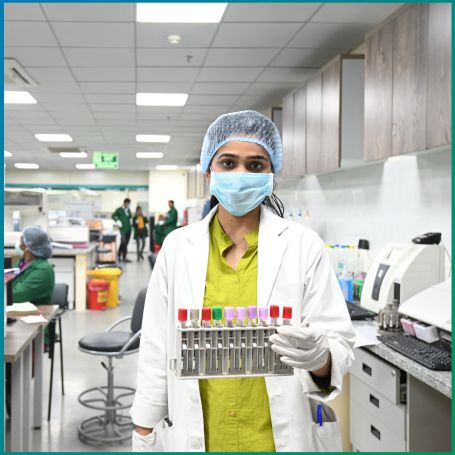
Chikungunya fever is a viral illness transmitted by Aedes mosquitoes, characterized by symptoms such as fever, joint pain, rash, and muscle aches.

The Chikungunya RNA PCR (Polymerase Chain Reaction) qualitative test is a molecular diagnostic method used to detect the genetic material (RNA) of the Chikungunya virus in a patient's blood. Unlike serological tests that detect antibodies (IgM or IgG) produced by the immune system in response to the virus, the PCR test directly identifies the presence of the virus itself.
The Chikungunya RNA PCR test requires a blood sample, usually drawn from a vein in the arm (venipuncture). The sample is sent to a laboratory, where the PCR process begins. The test involves the following key steps:
1] RNA Extraction: The viral RNA is extracted from the blood sample. This step isolates the virus’s genetic material for further analysis.
2] Reverse Transcription: Since the Chikungunya virus is RNA-based, the RNA is first converted into complementary DNA (cDNA) through a process called reverse transcription.
3] Amplification: The cDNA is then amplified using the PCR method. This process involves copying the DNA multiple times to produce enough genetic material for detection.
4] Detection: The amplified DNA is analyzed for the presence of specific Chikungunya virus sequences. If the virus is present, it will be detected by the PCR machine, which produces a signal indicating a positive result.
The Chikungunya RNA PCR qualitative test provides qualitative results, meaning it indicates whether or not the virus is present, but does not quantify the viral load. The results are typically reported as:
1] Positive: A positive result means that Chikungunya virus RNA was detected in the sample, confirming an active infection. This is usually indicative of the acute phase of the disease, where the virus is actively replicating in the body.
2] Negative: A negative result means that no Chikungunya virus RNA was detected in the sample. This could suggest that the person is not currently infected with the virus, or that the sample was collected too late in the infection when the viral load is too low to detect.
It’s important to note that the PCR test is most effective when performed early in the infection, typically within the first 7-10 days of symptom onset. After this window, the viral RNA may become undetectable, especially if the body has already started to mount an immune response.
You should choose Diagnopein for your Chikungunya RNA PCR Qualitative Test because we are committed to providing high-quality diagnostic care in a clean and hygienic environment. Our center is equipped with advanced technology to ensure accurate and reliable test results, which are crucial for assessing this test. Diagnopein’s experienced staff is dedicated to handling tests with precision and care, offering you both expertise and comfort. We also offer affordable pricing, making essential health diagnostics accessible without compromising quality. For timely, professional, and affordable cardiac testing, Diagnopein is your trusted partner for your healthcare.
1. Type of Specimen
2. CHIKUNGUNYA RNA Qualitative
3. Indirect coombs Test
4. Space
Yes, PCR is one of the most sensitive and accurate methods for detecting the Chikungunya virus, especially during the acute phase of infection.
The test may produce a false negative if performed too late in the infection, after the viral load decreases. It is also more expensive and requires specialized equipment.
A blood sample is collected (typically through venipuncture), and the RNA is extracted, amplified, and analyzed for the presence of the Chikungunya virus.
No, the PCR test is used to detect active or recent infections, not past infections. For past infections, antibody tests (IgM/IgG) are used.